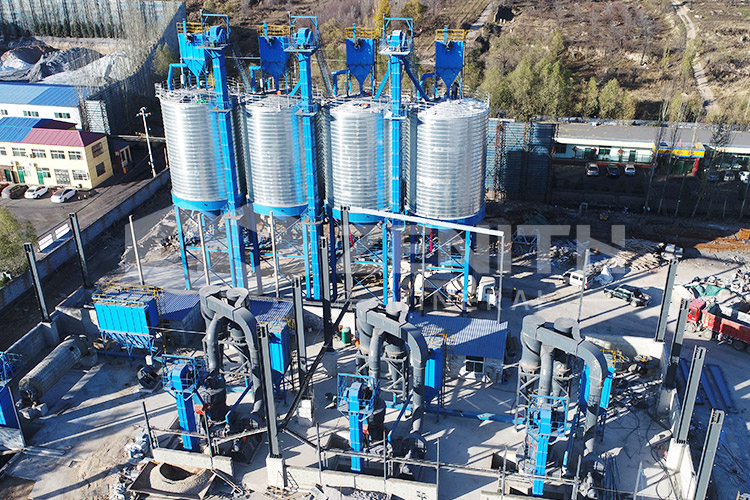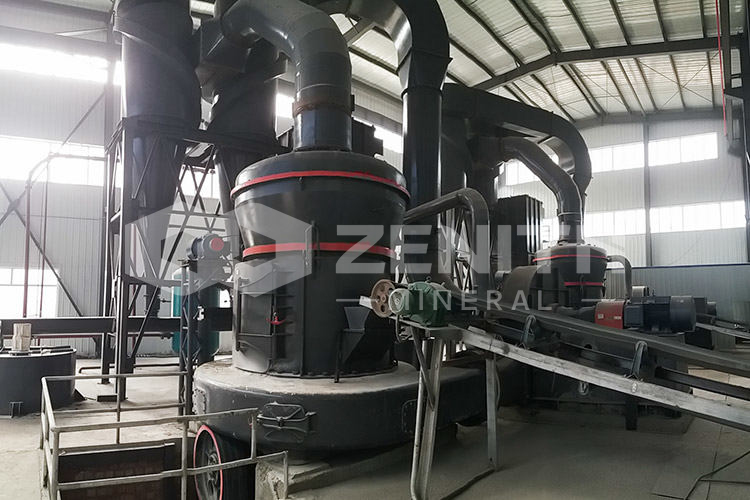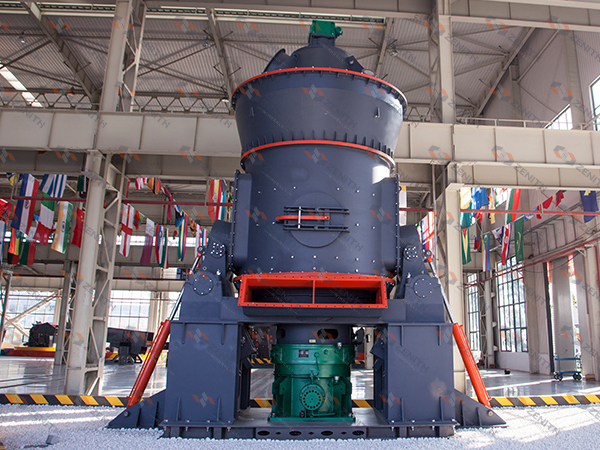Limestone admixture grinding equipment, finished product fineness 325 mesh, used for mine backfilling.
2025-11-17 18:57:12
In modern mining operations, backfilling has evolved from a simple waste management practice to a sophisticated engineering solution that enhances ground stability, improves ore recovery, and minimizes environmental impact. The effectiveness of backfill material depends significantly on the properties of its constituent materials, particularly limestone when used as a primary component. Achieving the optimal 325-mesh fineness (approximately 44 microns) for limestone in backfill applications requires precision grinding equipment that balances production efficiency, energy consumption, and operational reliability.
Shanghai Zenith Machinery, with decades of specialized experience in industrial powder processing, has developed grinding solutions specifically tailored to the demanding requirements of mining backfill operations. Our equipment portfolio encompasses multiple technologies, each offering distinct advantages for different operational scenarios and production requirements.
_1763377032591.jpg)
The Critical Importance of 325-Mesh Fineness in Backfill Applications
Why has 325 mesh become the industry standard for limestone in backfilling? At this fineness, limestone particles demonstrate optimal packing density and chemical reactivity. The fine powder fills interstitial spaces between larger aggregate particles, creating a denser matrix that reduces permeability and increases compressive strength. Furthermore, the increased surface area accelerates pozzolanic reactions in cementitious backfills, leading to faster setting times and improved long-term stability.
Our MTW European Trapezium Mill stands as an exemplary solution for operations requiring consistent 325-mesh production with capacities ranging from 3 to 22 tons per hour. The mill's modular impeller adjustment system allows operators to fine-tune output fineness with remarkable precision, ensuring the finished product consistently meets backfill specifications. What truly distinguishes this system in mining applications is its energy efficiency – consuming up to 60% less power than traditional ball mills of comparable capacity.
Vertical Mill Technology: Revolutionizing Backfill Material Production
For large-scale mining operations requiring continuous, high-volume production, our LM Vertical Grinding Mill offers unparalleled advantages. The vertical roller mill design incorporates several features particularly beneficial for backfill material preparation:
_1763377032594.jpg)
The compact footprint of LM Vertical Mills reduces infrastructure requirements by approximately 50% compared to ball mill systems, a significant consideration for space-constrained mining sites. The fully automated control system enables remote operation and monitoring, reducing labor costs and minimizing human error. Most importantly for mining environments, the completely sealed system operating under negative pressure eliminates dust emissions, addressing both worker safety and environmental compliance concerns.
With capacity ranging from 3 to 340 tons per hour and the ability to handle input material up to 70mm, the LM Vertical Mill can process run-of-mine limestone directly, streamlining the production workflow from raw material to finished backfill component.
Adapting to Variable Feedstock: The Flexibility of Trapezium Mills
Mining operations often encounter variations in limestone quality and characteristics throughout different sections of a deposit. Our MTM European Trapezium Mill, with over 30 years of proven performance in mineral processing applications, offers exceptional adaptability to changing material properties. The stable grinding performance ensures consistent output quality even with fluctuating feed composition, while the high-efficiency impeller fan (85% air induction efficiency) maintains optimal material flow through the system.
The working principle of both MTW and MTM series mills ensures efficient classification – qualified fine powder is separated in cyclone collectors while coarse particles automatically return for regrinding. This closed-circuit operation maximizes production efficiency and guarantees that the final product contains no oversize particles that could compromise backfill integrity.
_1763377032596.jpg)
Beyond Basic Grinding: Additional Considerations for Backfill Operations
Successful backfill material production extends beyond achieving the target fineness. Several additional factors must be considered:
Moisture Control: Excessive moisture in backfill material can lead to segregation, reduced strength, and handling difficulties. Our grinding systems incorporate thermal capabilities to simultaneously dry and grind limestone when necessary, achieving optimal moisture content for backfill applications.
Chemical Consistency: Variations in limestone chemistry can affect backfill performance. Zenith grinding equipment includes control systems that monitor and adjust operations to maintain chemical consistency across production batches.
System Integration: For complete backfill plant solutions, our grinding systems can be seamlessly integrated with mixing, transport, and placement equipment, creating a cohesive production line from raw material to underground placement.
_1763377032598.jpg)
Case Study: Implementing Sustainable Backfill Solutions
A copper mining operation in South America recently transitioned to dry backfill using limestone ground to 325 mesh with Zenith's MTW European Trapezium Mill. The results demonstrated a 40% reduction in binder consumption compared to conventional backfill, while achieving 28-day compressive strengths exceeding design requirements by 15%. The system's energy efficiency translated to an annual power saving of approximately 850,000 kWh, significantly reducing the operation's carbon footprint while lowering operating costs.
The mining company reported additional benefits including reduced water consumption (as dry backfill eliminated process water requirements), decreased transportation costs due to higher density material, and improved working conditions from eliminated slurry handling issues.
_1763377032599.jpg)
As mining companies increasingly prioritize both operational efficiency and environmental responsibility, the selection of appropriate grinding technology for backfill material production becomes increasingly critical. Zenith's comprehensive range of grinding equipment, backed by global support capabilities across 180 countries, provides mining operations with reliable, efficient solutions tailored to their specific backfill requirements.
Through continuous innovation and deep understanding of mining industry needs, Zenith remains committed to developing grinding technologies that not only meet current backfill specifications but anticipate future industry trends toward drier, stronger, and more sustainable backfill solutions.
Frequently Asked Questions
What makes 325 mesh particularly suitable for mine backfilling applications?
325 mesh (approximately 44 microns) provides the optimal balance between particle packing density and chemical reactivity. This fineness allows for complete filling of voids between larger aggregate particles while providing sufficient surface area for effective binder reactions, resulting in backfill with superior compressive strength and reduced permeability.
How does the energy consumption of Zenith grinding mills compare to traditional ball mills?
Our MTW and MTM series trapezium mills consume up to 60% less energy than traditional ball mills of equivalent capacity under ideal working conditions. The LM Vertical Grinding Mill offers additional efficiency through its integrated design and advanced grinding mechanism, further reducing operational costs.
Can Zenith grinding equipment handle variations in limestone hardness and composition?
Yes, our grinding systems are engineered to maintain consistent output quality despite variations in feed material characteristics. The adjustable grinding parameters and robust construction ensure stable performance across a wide range of limestone types commonly encountered in mining operations.
What capacity range is available for backfill material production?
Zenith offers grinding solutions spanning from 3 T/H to 340 T/H, allowing operations to select equipment precisely matched to their production requirements. This range accommodates everything from small-scale trial operations to large-scale production facilities.
How does the system ensure consistent 325-mesh output quality?
Our mills incorporate advanced classification systems that continuously separate fine and coarse particles. Qualified fine powder is collected as finished product while oversize material automatically returns to the grinding chamber. This closed-circuit operation, combined with precise control systems, guarantees consistent fineness meeting backfill specifications.
What environmental benefits do Zenith grinding systems offer for backfill operations?
Our systems operate under negative pressure with complete sealing, eliminating dust emissions. Additionally, the significant energy reduction compared to conventional mills lowers the carbon footprint of backfill production. Some configurations also enable dry backfill production, eliminating process water requirements.
What support services are available for mining operations implementing these systems?
With overseas offices in more than 30 countries and a service network covering 180+ regions, Zenith provides comprehensive technical support, operator training, spare parts supply, and maintenance services to ensure optimal performance throughout the equipment lifecycle.








